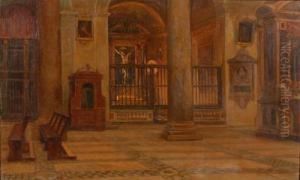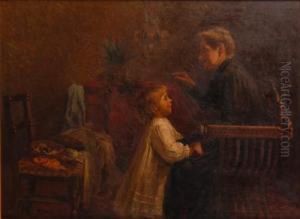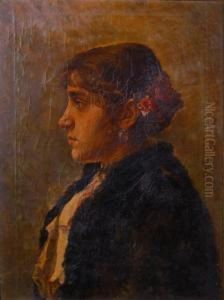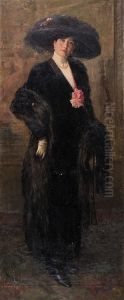Giuseppina Vannutelli Paintings
Giuseppina Vannutelli was an Italian painter and pastellist, celebrated primarily for her portraiture and genre scenes. Born in 1868 in Rome, Italy, she was part of a noble family and her full name was Giuseppina Ludovica Vannutelli. Her artistic journey began in an era when it was relatively uncommon for women to pursue professional careers in the arts. However, she was able to study and hone her skills, often focusing on the styles and trends that were prevalent in the late 19th and early 20th centuries.
Vannutelli's works were known for their delicate sensibility and her adept use of color, which she often applied in soft, harmonious combinations. She was particularly influenced by the Macchiaioli movement, an Italian precursor to Impressionism, which emphasized quick brushstrokes and a less formal approach to light and color. Vannutelli adapted these techniques to her own work, creating portraits and scenes that felt alive with movement and texture.
Throughout her career, she exhibited her work in various Italian cities and received considerable acclaim. During the late 19th century, she participated in exhibitions such as the Società degli Amatori e Cultori di Belle Arti in Rome and the Società Promotrice di Belle Arti in Turin. Her success was notable not only for her gender but also because she managed to gain recognition in an art world that was predominantly male-dominated.
Giuseppina Vannutelli lived through a period of significant social and artistic change. She witnessed the advent of modern art movements but remained true to her stylistic preferences, which combined elements of realism and impressionism. Vannutelli continued to paint throughout her life, leaving behind a body of work that reflected her unique perspective and skill.
She passed away in 1941, leaving a legacy that has been appreciated by art historians and collectors. Her contributions to the Italian art scene have ensured that she is remembered as one of the notable female artists of her time, representing the talents and achievements of women in a period when they were often overlooked in the arts.



